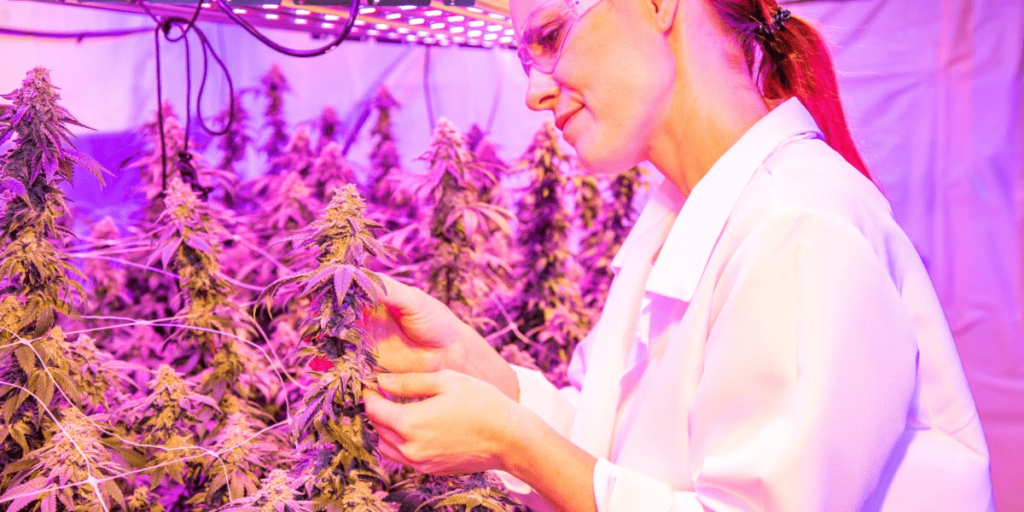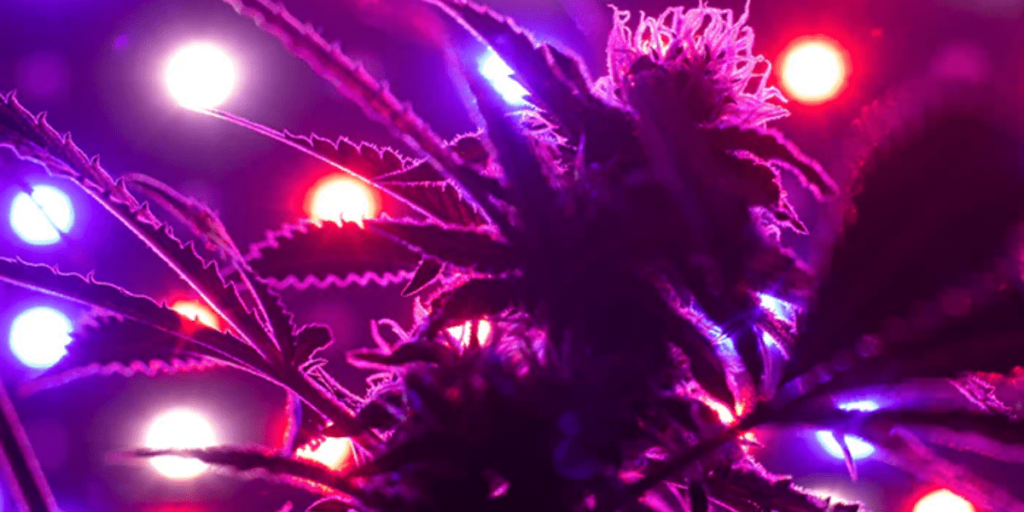Repotting cannabis increase yield is a common question among growers. Many want to know if simply moving a cannabis plant into a larger pot can lead to bigger buds and better harvests. The truth is, repotting plays an important role, but it’s not the only factor involved. For those new to transplanting, understanding how to handle seedlings properly is crucial,you can find practical tips in our detailed guide on transplanting cannabis seedlings correctly.
While repotting isn’t the most glamorous step in cultivation, experienced growers understand that doing it properly and at the right time supports healthy root growth and ultimately improves yield quality and quantity.
So, how exactly does repotting affect cannabis plants? It involves more than just changing containers,it’s about timing, root health, and giving the plant space to thrive. Let’s dive deeper into why repotting matters.
Repotting Cannabis: More Than Just Moving Plants
To repot is to interrupt. You’re physically disturbing the root zone,arguably the most sensitive and critical part of the cannabis plant. For the plant, it’s a stressful event. But that stress, when properly timed and managed, can paradoxically unlock more vigorous growth.
The process isn’t just about giving the plant more room. It’s a reset. A recalibration.
A cannabis plant grown in a cramped container is like a fish stuck in a puddle. Its growth potential becomes defined by its confinement. Repotting, then, isn’t just a convenience,it’s a biological invitation for the plant to expand.
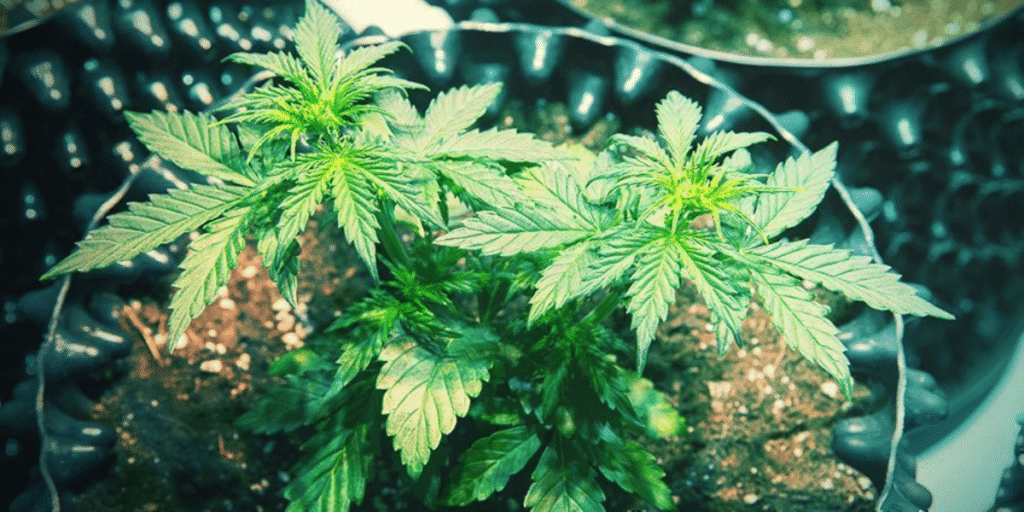
How Root Growth Impacts Cannabis Yield
Roots: The Hidden Engine Behind Bigger Yields
Roots are easy to overlook. Since they’re out of sight, we often forget just how active and essential they are. Beneath the soil or growing medium, roots do far more than anchor the plant. They absorb water and nutrients, send chemical signals, and even interact with beneficial microbes to support overall plant health.
Here’s what many growers miss: roots aren’t passive. They explore. They reach, stretch, and branch out until they hit a barrier. In small pots, that happens fast. Once they run out of room, roots start circling the container, becoming tangled and compacted. This is known as root binding, and it creates serious issues:
- Reduced oxygen flow, which increases the risk of root rot
- Uneven nutrient uptake, leading to deficiencies
- Poor water retention, causing cycles of over- or underwatering
- Stress responses, like hormone imbalances that slow vegetative growth
Each of these factors limits how large and healthy your cannabis plant can become and that directly impacts yield.
So, does repotting help? Absolutely. Giving roots more space allows them to grow freely, access more nutrients, and support a stronger, more productive plant. In short: healthy roots grow bigger buds.
Timing Your Cannabis Repot for Maximum Yield
The Subtle Art of Timing Your Transplant:
There’s a quiet skill to knowing when to repot a cannabis plant. It’s a bit like catching a wave: move too early and you miss the lift; wait too long and you risk crashing. Timing is everything, and experienced growers learn to read the signs carefully.
Here are the key signals to watch for:
- Roots appearing at the bottom of the pot, sometimes peeking through drainage holes.
- The pot drying out quickly, with water disappearing within hours.
- Growth slowing down despite proper feeding, which often means the roots have outgrown their space.
- A top-heavy plant that clearly outweighs its container.
These signs usually show up during two important stages:
First, after the seedling phase, typically between weeks two and three, when it’s time to move from a solo cup to a 1 to 3-gallon pot. Second, just before flowering, around weeks four to six, when you should upgrade from the veg pot to a final container of five gallons or more.
Equally important is knowing when not to repot:
Avoid transplanting during flowering unless it’s absolutely necessary, such as severe root binding. Also, don’t repot a plant that is stressed, diseased, or suffering from nutrient burn. Lastly, avoid transplanting during heat waves or under intense lighting, as the plant is already under stress.Timing is everything when it comes to repotting. Transplanting too early or too late can stress the plant and reduce yields. Knowing when and how to repot cannabis plants properly helps avoid common pitfalls and promotes healthy growth. If you want a deeper dive into the best timing and step-by-step methods, check out our article on the same topic.
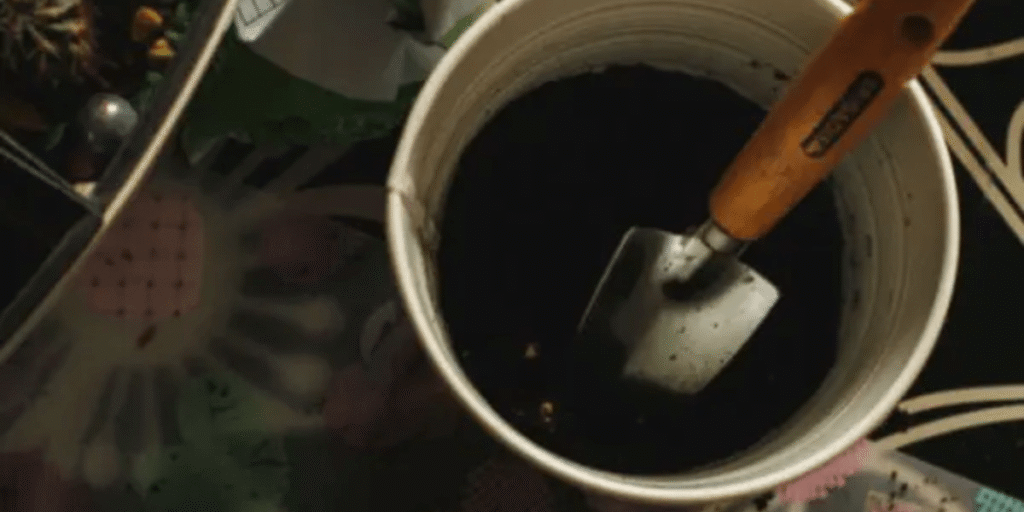
Why Skipping Repotting Lowers Cannabis Yields
Some growers, especially beginners, tend to avoid repotting altogether. Why? Because it feels risky.
They worry about damaging the roots.
They fear the dreaded transplant shock.
And they’ve probably read enough cautionary tales on forums like Reddit to stick with a “better safe than sorry” approach.
But avoiding repotting out of fear can actually cause bigger problems down the line like roots becoming permanently cramped, nutrients not being absorbed properly, slower flowering, and ultimately, smaller yields.
The real secret isn’t to skip repotting, but to learn how to do it right.
Understanding Transplant Shock in Cannabis Growth
Transplant shock is a real thing. It happens when the plant reacts to sudden changes in its environment, such as shifts in light, humidity, or root disturbance. Fortunately, it’s not inevitable.
When roots get disturbed, the plant releases a stress hormone called abscisic acid (ABA). This hormone signals the stomata to close, slows water loss through transpiration, and temporarily reduces photosynthesis.
In simple terms, the plant presses the pause button.
However, if the transplant is done carefully and at the right time, ABA levels stabilize quickly. The plant recovers and often grows stronger as it takes advantage of the new root space.
That is when the real boost in yield happens.
Supporting Cannabis Plants During Repotting
Experienced cultivators know that post-transplant support makes all the difference.
Here’s what works:
- Root boosters (e.g., mycorrhizae): Form symbiotic relationships with new roots, increasing water and nutrient uptake.
- Seaweed or kelp extract: Rich in cytokinins that help reduce shock.
- Silica supplements: Strengthen cell walls, helping plants handle stress.
- Dimmed lighting for 24–48 hours: Gives the plant time to adjust without intense transpiration pressure.
Don’t forget: your hands matter too. A careful transplant done slowly is better than a rushed one done rough.
Soil, Coco, or Hydro: Effects on Cannabis Yield
Soil is quite forgiving but can become compacted over time. Transplanting helps to loosen the soil and improve oxygen flow around the roots.
Coco coir drains quickly, so it’s important to manage watering carefully after transplanting. Using buffered coco with added calcium and magnesium provides the best environment for healthy roots.
Hydroponic systems require a different approach. Instead of focusing on container size, the key is ensuring roots have constant access to oxygen-rich water. In systems like deep water culture (DWC), transplanting often means moving net pots or refreshing the root chamber rather than changing the entire growing medium.
No matter the method, the main principle is the same: roots should never feel cramped or deprived of air.
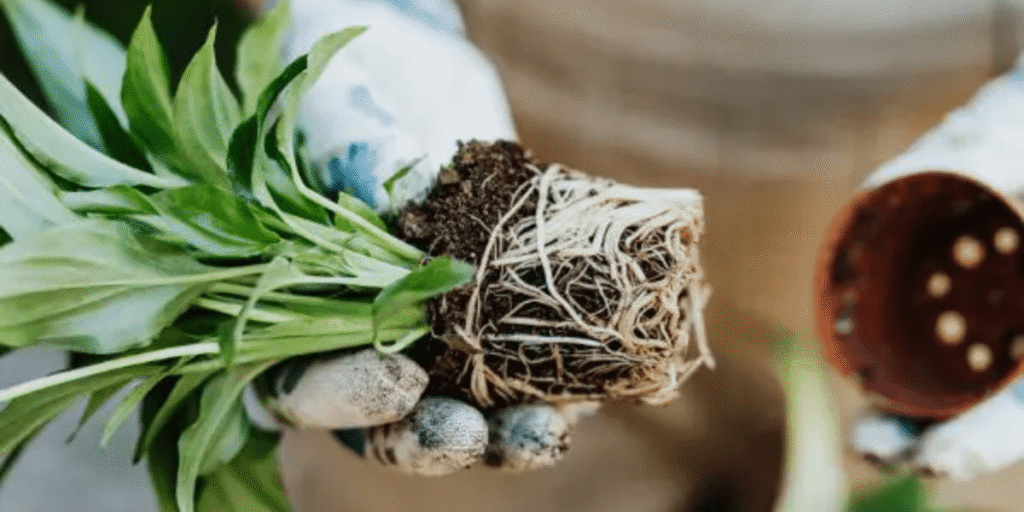
Real Data on Yield Increases from Cannabis Repotting
Because of legal restrictions in many countries, there is limited formal research on how transplanting affects cannabis yields. However, growers both commercial and craft have shared consistent observations.
When repotting is done at the right time, vegetative growth can increase by 15 to 40 percent. On average, yield per plant improves by 10 to 30 percent, though this varies depending on the strain and pot size. Additionally, terpene profiles often become stronger, likely because the plants experience less stress during later growth stages.
What really matters is not just the quantity of the harvest, but the quality. Plants kept in cramped pots tend to produce light, underdeveloped buds with lower resin levels. When roots have room to grow freely, the plant can direct its energy toward creating dense, resin-rich flowers full of trichomes.
How Pot Choice Affects Cannabis Root Health and Yield
We choose the pot, but the pot also influences how the plant grows.
Plastic nursery pots are affordable and easy to use, but they often cause roots to circle around the edges, which can limit growth.
Fabric grow bags, like Smart Pots, encourage air pruning. This helps reduce transplant shock and promotes a healthier, denser root system.
Air pots provide excellent oxygen to the roots, but they tend to dry out faster and require careful watering to keep plants thriving.
Instead of simply picking a bigger pot, it’s important to select the right container that matches your growing method and supports healthy root development.
What Repotting Cannabis Teaches Growers About Yield
There is something almost poetic about the act of transplanting. It means disturbing what is familiar in order to encourage growth. It requires accepting some temporary stress with the hope of long-term strength.
In many ways, repotting reflects our own journey. Growth rarely happens in comfort. We grow when we reach our limits and push beyond them. When we move into bigger spaces, we open ourselves to new possibilities. Plants do the same.
Truly understanding this both in a practical sense and on an intuitive level is what separates an experienced grower from a casual gardener.
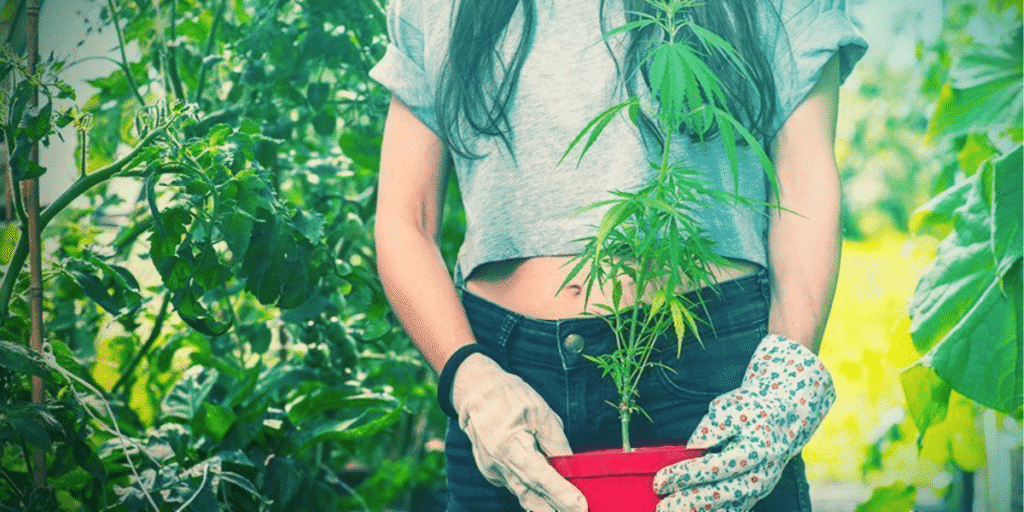
Top FAQs on Repotting Cannabis for Bigger Harvests
Q1: Will my plant go into shock after repotting?
A little stress is normal, but if you transplant carefully and avoid disturbing the roots too much, most healthy plants bounce back within a couple of days. It’s all about timing and gentle handling.
Q2: How many times should I repot a cannabis plant?
Usually once or twice is enough. Most growers start in a small pot or seedling tray, then move to a medium veg pot, and finally into the container where the plant will flower. The key is not to leave it rootbound for too long.
Q3: Is it okay to repot during flowering?
Generally, no. Repotting during flower can stress the plant and impact bud development. Only consider it if the roots are severely bound and the plant is clearly struggling. Otherwise, get all your transplanting done before the flowering stage begins.
Q4: How do I choose the right pot size as my plant grows?
Start with a small pot and gradually increase the size as the roots expand. For seedlings, a solo cup or a 1-gallon pot is usually enough. During the vegetative stage, transition to a 2–5 gallon pot. When the plant enters flowering, most growers switch to a 5–7 gallon pot or larger, depending on the desired final size. The key is to scale up as the roots grow, rather than placing a small plant in an oversized container too early.
Q5: Are fabric pots better than plastic pots?
Fabric pots offer better drainage and allow the roots to “air prune,” which promotes a healthier root structure. They do dry out faster, though, so you’ll need to water more often. For most indoor growers, fabric pots are a great choice for maximizing yield and root health.
Why Repotting Cannabis Is Key to Higher Yields
So let’s go back to the question:
Does repot cannabis increase yield?
Yes,but only when you treat it not as a task, but as a decision rooted in biology, timing, and care.
Repotting offers:
- A chance to reset root constraints
- A moment to refresh nutrient medium
- A critical boost in pre-flower growth
- A lasting impact on flower formation and cannabinoid production
It may not be flashy. It may not be easy. But it is, undeniably, one of the smartest tools in a grower’s kit.
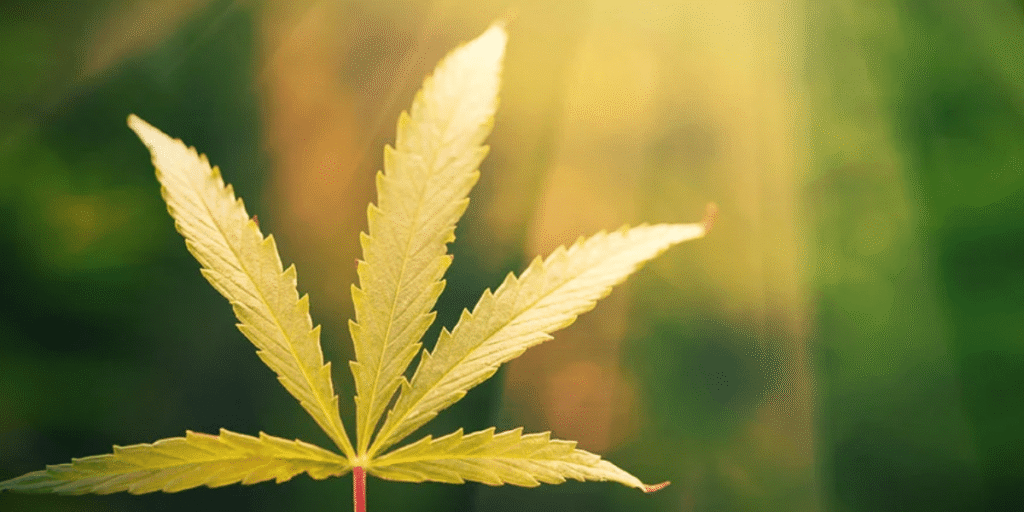
Boost Your Cannabis Yield with Proper Repotting
Think of repotting as moving your cannabis plants into a bigger, better home more room to grow, improved airflow, and the right environment to thrive. When done at the right time and with care, your plants will reward you with stronger roots, faster growth, and bigger, denser buds.
Ready to take your grow to the next level? Share your progress with us on Instagram @Greenfuturelight,we love seeing how your plants flourish!
Looking for more tips on hydroponics, grow lights, and plant care? Visit our website at www.greenfuturelight.com for expert guides and advice.Want to grow healthier, more productive plants? Check out our premium LED Grow Light Collection today!
Have questions or need personalized help? Contact Our Team for a free consultation anytime.
Grow smarter. Grow stronger. Grow with Greenfuturelight.


